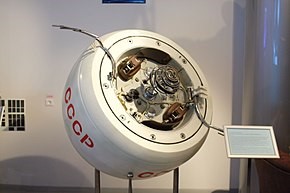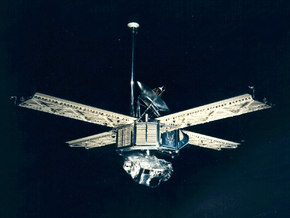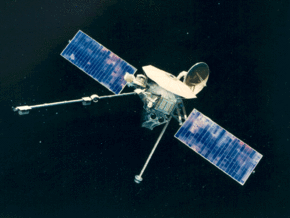The context at the end of 1965 is in the race to the Moon. The U.S. Ranger robotic reconnaissance program has just ended and its successor Surveyor is preparing. The Soviet equivalent Luna continues at a frantic pace despite the failures. In the technology preparation programs, Gemini is in full swing, while after the almost miraculous success of the Voshkod missions, the Zond and Soyuz programs are falling behind. In this rather unfavourable position, the Soviets decided to restart the efforts. OKB 1, which managed both manned missions and lunar and planetary exploration, was accumulating failures. To focus on the manned race, Sergei Korolev (boss of OKB 1) decides to get rid of robotic exploration programs shortly before his death.
The heavy task of restoring the Soviet coat of arms in this area is attributed to the OKB Lavotchine (formerly OKB 301) who has no experience in space. However its director, Babakine, has extensive experience in missile radar guidance systems which involves for advanced electronic components constraints similar to space probes.
The OKB Lavotckine sets aside mars exploration and begins by building test facilities (centrifuge, autoclave) that are then used to upgrade 4MV probes to make V67s (venera for 1967 window). The results are felt from the first window to Venus in June 1967. Even if a probe is still lost due to the failure of the Molnia launcher. The second (venera 4) is launched correctly. It penetrates violently into the atmosphere and then continues a more gentle descent under a parachute. Contact was eventually lost when the temperature reached 262°C and the pressure of 22 bars could not be known whether it was due to the impact with the ground or to overheating.

The Americans do not devote as much effort to this window and prefer to devote its resources to lunar missions. The JPL retrieved the reserve probe from the Mariner 3 and 4 missions to Mars and named it Mariner 5. It adapts it to Venusian missions by increasing its thermal protection and turning over certain elements such as solar panels. The use of an Atlas-Agena launcher prohibits the carrying of an atmospheric probe, but studying the probe’s signals just before and after its passage behind Venus (and thus passing through its atmosphere) makes it possible to estimate a surface temperature of 430°C.
For the next Venusian window in January 1969, the Soviets resumed a double atmospheric mission as in 1967. V69 (venera for 1969) probes have a reduced parachute to penetrate the atmosphere more quickly. For once the two Molnia launchers are working properly and the Venera 5 and 6 probes penetrate deeper and yield under 26 and 40 bar respectively.
1969 is mainly marked by a Martian window in March. The two superpowers decided to take the opportunity to launch probes with new launchers. The OKB Lavotchkine was preparing two 5-ton M69 (mars for 1969 window) probes launched by the Proton rocket (compared to 1 ton for the probes launched by Molnia). They are both lost as a result of a failure of the launcher’s top stage. On the American side, the second stage Centaur is finally ready and is mounted on a first stage Atlas. This allows the Mariner probes to be increased to 450 kg, double what was feasible with Atlas-Agena. The launches of Mariner 6 and 7 were perfect, and after a hectic transit, they flew over the target at the end of July 1969 and were largely overshadowed by the success of Apollo 11.

Martian efforts continued with the window of May 1971 with the arrival of the orbiters. Mariner 8 and a Soviet probe is lost at launch, but Mariner 9 transmits data into orbit for a year and a half. The Soviet orbiters of Mars 2 and 3 do the same for 9 months each. Soviet probes, heavier thanks to Proton, also carry less fortunate landers. The first crashes on Mars and the second manages to land smoothly in the middle of a global dust storm and loses contact before it has even been able to send a complete image.
The Soviets prepared and launched 4 probes during the July 1973 window that provided only 9 days of in-orbit collection data and no successful landings.
Meanwhile, Venus is rather neglected. The Americans do not send any probes and the Russians continue with old probe models and the Molnia launcher. The windows of August 1970 and March 1972 are particularly similar. Each time, two probes are launched, one of which is lost each time during launch. The surviving 1970 probe that became Venera 7 reaches Venus and continues to transmit data to the surface. But communication becomes weak on the surface and for 20 minutes, only the temperature 475°C is transmitted to the Earth. In 1972, Venera 8 followed the same profile, but managed to maintain a stable connection from the surface. This is enough to confirm a temperature of 470°C and a pressure of 90 bars.
The Venusian window of November 1973, is not used by the Soviets. The only probe launched is Mariner 10, the last of the program. Launched by an Atlas-Centaur, it flies over Venus but mainly has the role of performing 3 flybys of Mercury, the last yet unexplored telluric planet.
